An easy motorway journey of 100km brought me from Vergina to Thessaloniki. I say easy, for,although it is a good motorway for the most part,with 3 lanes,and a speed limit of 130kpm,you have to keep your eye on the road as there are occasional potholes or gulleys due to melted road which would be hard to handle if you hit them at speed.But normal standards of courteous western European-style driving now apply again!
Thessaloniki is a busy and mostly modern place:it’s Greece’s second city,but with a population of 390,000 is about the size of Bristol.The draw for me, however, is that it was also the second city of the Byzantine empire after Constantinople,when it was called Salonika, so there is a rich history on display if you look hard.My research had warned me that it has big parking problems.The only campervan spot is at a campervan dealership( Zampetas Brothers) 20 km south of the city which offers free no-obligation overnight stops. I reached them via the ring road.It's not the most appealing of spots,being behind a petrol station next to a dual carriageway on the corner of the airport(Confusingly called Macedonia Airport,the name probably an intentional political statement)with a lot of aeroplane noise.There is also the site dog chained up 10 feet from where I was told to park, and although friendly it likes barking.However,the owners were very friendly too and spoke English,it is free,has a toilet,electricity,free wifi ,water etc, so beggars can’t be choosers.One English chap,retired long ago,came over and introduced himself .He and his wife are passing through on the way from Crete to England, their first return to England for 10 years,only going back because his daughter is having a baby in a couple of months.Clearly this form of travelling can be very addictive ! He says he drops in here whenever he’s passing as he can get problems with his van fixed while staying overnight. According to various web reviews this business is highly regarded.
Thessaloniki is a busy and mostly modern place:it’s Greece’s second city,but with a population of 390,000 is about the size of Bristol.The draw for me, however, is that it was also the second city of the Byzantine empire after Constantinople,when it was called Salonika, so there is a rich history on display if you look hard.My research had warned me that it has big parking problems.The only campervan spot is at a campervan dealership( Zampetas Brothers) 20 km south of the city which offers free no-obligation overnight stops. I reached them via the ring road.It's not the most appealing of spots,being behind a petrol station next to a dual carriageway on the corner of the airport(Confusingly called Macedonia Airport,the name probably an intentional political statement)with a lot of aeroplane noise.There is also the site dog chained up 10 feet from where I was told to park, and although friendly it likes barking.However,the owners were very friendly too and spoke English,it is free,has a toilet,electricity,free wifi ,water etc, so beggars can’t be choosers.One English chap,retired long ago,came over and introduced himself .He and his wife are passing through on the way from Crete to England, their first return to England for 10 years,only going back because his daughter is having a baby in a couple of months.Clearly this form of travelling can be very addictive ! He says he drops in here whenever he’s passing as he can get problems with his van fixed while staying overnight. According to various web reviews this business is highly regarded.
Having got some helpful directions from the owner of the dealership, I caught the bus in to the city.I was told that the one coming past the campervan dealership goes to a place called Ikea where there is the local transport hub, and I have to change there for a bus to the city centre. At first I thought this was a Greek name of a city suburb-but it turned out of course to be a branch of the Swedish furniture giant we all know and love. It was a hot day at 25 degrees with no breeze so tramping round Thessaloniki turned out to be quite hard work. It’s not a particularly nice place, just a massive dusty grid system of nondescript 6 storey apartment blocks throughout ,with very busy traffic: the warning about the parking problems was spot on:-there is nowhere at all to mark even a mini because most streets are choked with double parking all along.The pedestrianised seafront is OK, even though it looks clearly converted from a container port .There is now a huge open concrete walkway along the sea, but with a spectacular view across the bay to a snow covered Mt Olympus,its white top glistening in the sun. On the seafront I visited the “White Tower”, a Thessaloniki landmark since the 15th century ,although it's no longer white.In need of sustenance ,I found the best kebab ever from an upmarket fast foot shop,a massive pile of spicy pork slices with couscous salad,tomato,cucumber,spicy fries,sauces,all wrapped in a thick yellow-floured pitta the size of a nan bread, and including drink just £2-10p.Macdonalds had better watch out.
I also managed to see what I had come for, some of the Byzantine history. There is an excellent, cool and modern Museum of Byzantine Culture which I went around. There are well organised displays with exhibits from 300 AD,through to about 1300 AD .And scattered through the city there are several very early Byzantine churches;The Rotunda of St George was built as the mausoleum of Emperor Galerius in 306 AD,and rivals the pantheon in Rome as a round domed building.There are 3 or 4 others built between 450 and 700 AD.Aghios Dimetrios,a 6th century church, was turned into a mosque by the Ottomans ,as many were,and had all its frescos plastered over.When Greece regained Salonika from the Ottomans in 1913(a surprisingly late date,I thought),the plaster was removed, fairly crudely, to reveal the old frescos.But then they were badly damaged by a fire that destroyed three quarters of the old city in 1917.A few sections remain however,although most are now copies.There is also an Aghia Sophia,a church built around 700 AD but of course on nothing like the scale of its namesake in Constantinople.
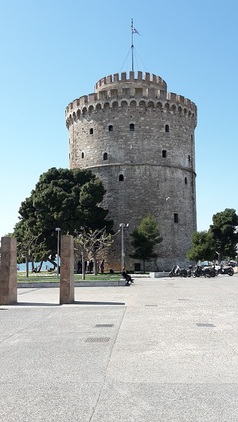
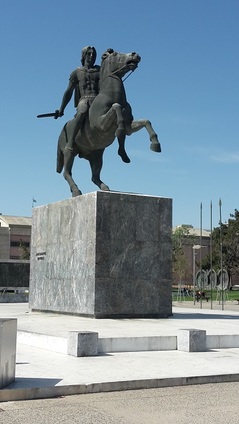
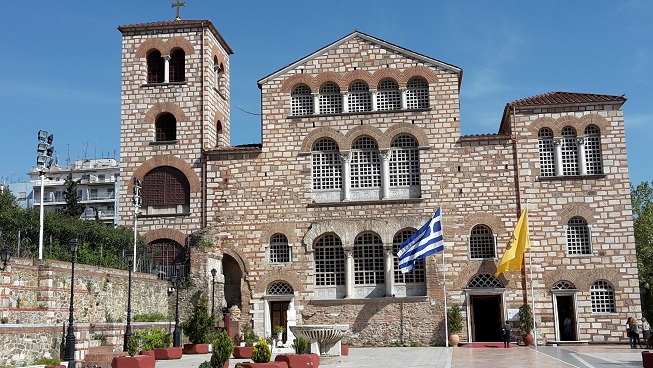
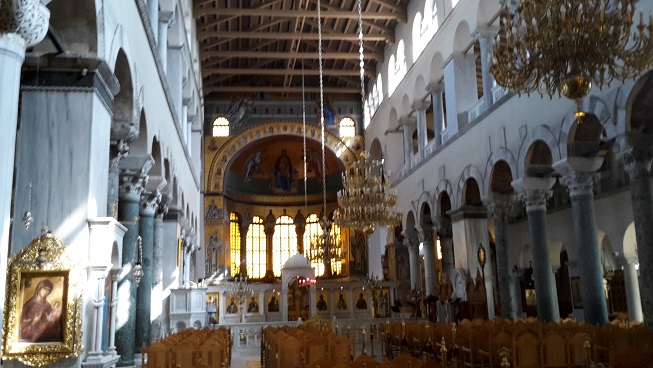
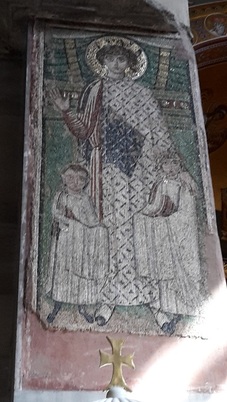
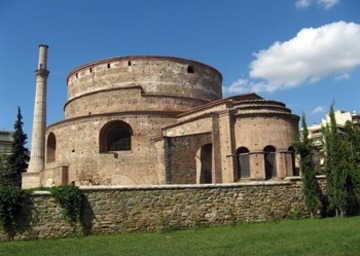
 RSS Feed
RSS Feed